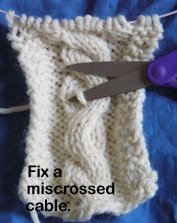.
At big bridge tournaments, the evening play is often not finished until after 10:00 pm. Afterward, there is usually talking about what happened and what might have happened or should have happened. There may be snacks. Bridge players may not get back to their hotel rooms until 11 or 11:30. Sleep may be evasive.
In Chicago I often woke up by 6:00 am, but didn't want to make noise or make the room lighter, so I sat quietly, checking email and doing some volunteer work, rather than flinging the curtains open and taking pics of the sunrise sky.
Our team played long and valiantly, but did not proceed to the final
four in their event. Bridge takes a lot of stamina, and playing two
sessions every day for four days in a row takes it right out of you, especially when you don't play that intensely very often.
Plus, if you are not playing bridge, you get to do all the excellent touristy things...............
On the 14th, we were both awake earlier than other days. This is the closest to a sunrise sky that I managed to capture.
7:20 am.
The next camera (and all the others that follow) will definitely be matte black! There are enough annoying reflections in this world without the camera itself being a cause of same! Argh!
When I first saw the wet pavement in the park, above, I wondered if it had been raining.
No. It was someone watering the plants..... Many large planters, just in this one little section of park. Chicago is serious about its flowers and other plants!
7:30 am.
8:35 am. Plant-waterer still at work. Michigan Ave full of vehicles. Good morning, Chicago!
8:10 am. Silvery lake.
10:50 am. After a leisurely breakfast, and showers, we are on our way to the Field Museum. I don't approve of writing on public surfaces (other than concrete sidewalks), but can agree with this sentiment..... *Some* things, anyway............
Walking east through the park, crossing the commuter-railroad tracks. This train was inbound. It seemed that the commuter trains on these tracks ran much less frequently than the el in the Loop. Less train noise in front of the hotel than in back.
Part of the construction of the bridge over the tracks. The big screws caught my eye. I bet they were nearly 3" in diameter. Then I paid attention to the texture of the metal plate thing, and the concrete and the small gravel/sand caught between the two lengths of metal....
Our familiar blue cluster of buildings (south of the hotel), and there's the Field Museum along the horizon. This section of the park looks like ball fields. They were getting some extra care, fenced off from the public. Our guess is that they hosted some large event, and are recovering from use and abuse. This is a big flat open space!
The lake. The 14th was warm enough that we were glad for clouds to moderate the sunshine.
Inside the Field Museum. Sue, face on, with her portrait on the second floor wall.
There was a lot of info around the skeleton, including this pic of the person who found the bones. Her name is Sue, and the skeleton was named after her. Other info detailed injuries this T. rex suffered in life. Broken ribs, holes through the jaw bone that are now thought to be the result of infection rather than bites. I can't remember more, but there were more. A tough life, even for a large major predator..........
On the 14th there were volunteers in the big hall, with things from the collections that we were invited to get close to. Very close. Like -- touch and hold!
One group of volunteers had horns and antlers from various deer and antelope. Moose, caribou, and many kinds of antelope. Ridged horns, twisted horns, curled horns..... How cool to get to hold them! One of the volunteers asked me if I knew the difference between horns and antlers, and I think he was surprised when I did. Antlers are bone, and are regrown each year. Horns are (essentially) hair, and stay on for the life of the animal.
I did not know, until he told me, that the ridges on horns form at a consistent rate, so if you know how many ridges a given kind of antelope grows each year, you can estimate the age of the critter from the horns. He didn't say the same thing is true for sheep, so now I am wondering about that....... (And about cattle and goats -- I think their horns are smooth and might not have noticeable growth marks?)
I also did not know that Pronghorns are an anomaly -- they have horns, but shed them each year.
In this closeup you can see the length-wise texture of the hair-like stuff this horn made of. Cool, yes?
.
Subscribe to:
Post Comments (Atom)

































No comments:
Post a Comment